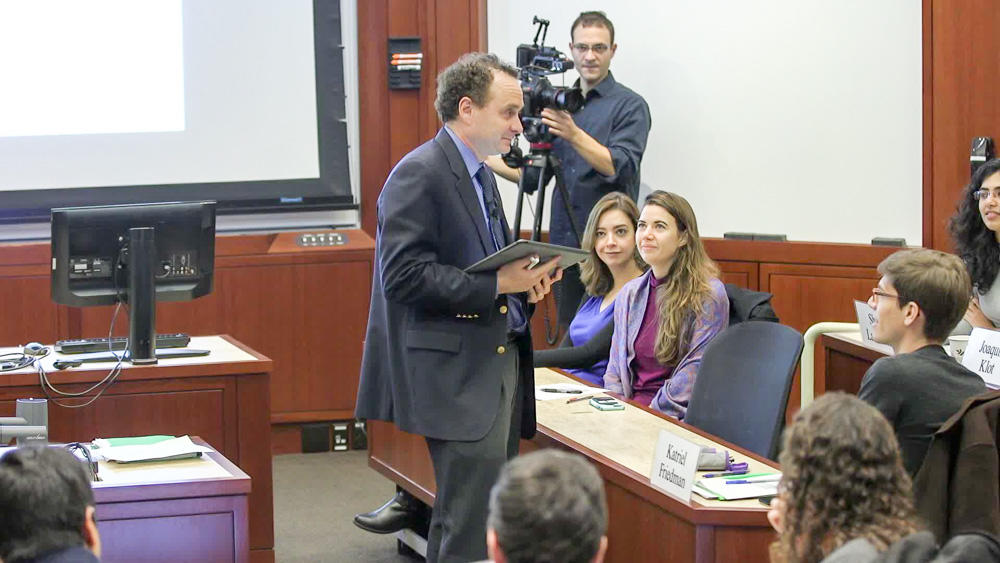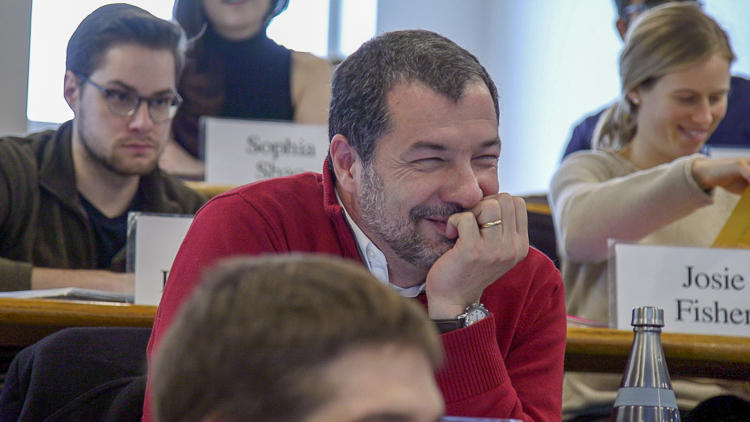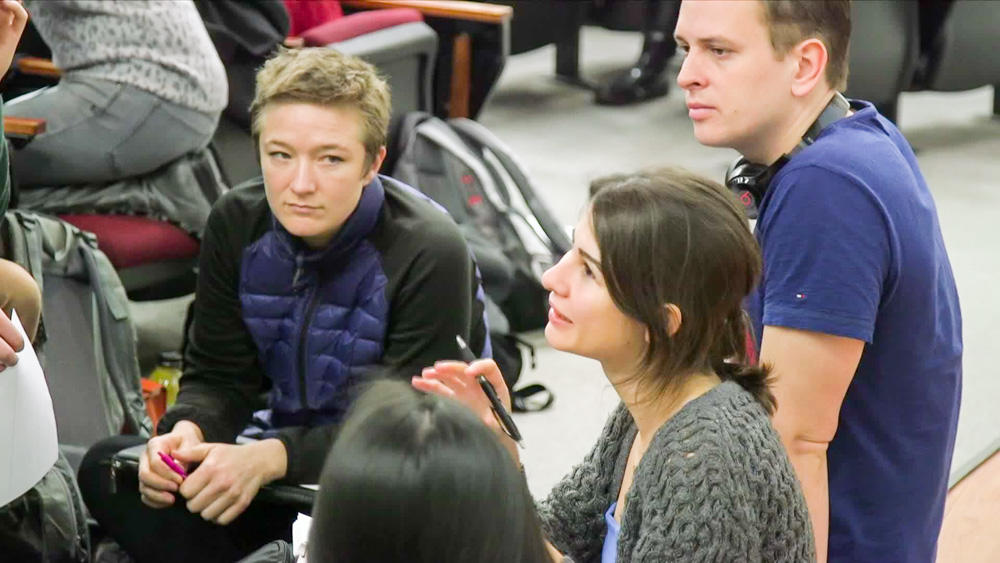An unenergetic, monotone delivery of instruction can easily stifle a student’s intellectual curiosity. The simple addition of humor, however, might keep students more engaged. It has even been shown to increase student learning. By cleverly sprinkling witticisms, amusing anecdotes, and self-deprecating quips throughout his lectures, Bob Kegan keeps the tone light in what can oftentimes be serious, tense subject matter. The result is a welcoming environment in which students feel comfortable and close to their professor.
Exercising gentle humor strategically
Instructor
Robert Kegan, William and Miriam Meehan Research Professor in Adult Learning and Professional Development
Student Group
Graduate
School
Harvard Graduate School of Education
Course
Adult Development
Group Size
~200 students
- In "The Use of Humor As a Teaching Tool in the College Classroom," Ronald Deiter describes common myths, practical tips, and specific examples about using humor in the college classroom
- A post in Faculty Focus provides tips for infusing humor into your classroom
- Lomax and Moosavi outline how humor can be used to teach statistics, arguing that its use can help minimize anxiety and develop conceptual understanding (2002)
- The use of humor in higher education was associated with higher final exam scores in a statistics and psychology course. One possible explanation for higher exam scores is that humor may give students a new perspective that can facilitate learning (Ziv, 1998).
- Humor is linked to content retention among undergraduate students (Garner, 2006)
- Temper heaviness with levity. Especially in classes based around tense concepts, mix in well-timed, appropriate humor to lighten the mood.
- If you find students reluctant to jump into a discussion, a gentle wisecrack might encourage participation and reduce tension
- A relevant joke (e.g., a little-known fact or a short story) can redirect wandering attention spans while making course content more memorable




